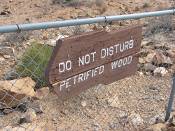The Pine-genus (pinus)
What kind of species are you dealing with.
Austrian_pine | Scots_pine | Maritime_pine
In parks and big gardens:
mountain_pine | White_pine | Himalayan_pine | Jeffrey_pine | Japanese_white_pine | Balkan_pine
Pines are easy and hard. Those encountered in the woods are easy to some extent. In gardens one can find a hell of a lot species from around the world.
To keep Pines apart you need to watch a number of details:
- Number of needles per bunch
- Lenght of needles
- Size of the cones, colour and sometimes texture and details (like thorns)
- Color and texture of the bark
- Form of buds
Bark of pines can be very different on different sides of the tree.
1. In the netherlands 95% of all pines in the forests is 1 species: Scots_pine. Recognisable because the bark up in the tree is orange-light-brown. Needles are short, 3 to 6 cm, often a bit blue-ish and they turn. Buds are small. Cones are small (2-5cm) and not conspicuous. Old trees can have scaled bark. Trunk is often curled and not often straight. Needles two in a bunch -->
Scots_pine
2. Other species are all not very common. Most common is the Austrian or black pine
a. Needles very long stirdy and thick (upto 20 cm). Very large cones, shiny and with thorns, pear-shaped, not slender. Cones fall of the tree often not opened.
Very large scales on big trees. Is said not to be tolerant and frost and rare, but in ou neighbourhood there are a lot of the anyway. Needles in bunches of two. In my opinion most beautiful pine -->
Maritime_pine
b. Needles 5 upto 15 cm. Trunk not with large scales, but paper-like greyish structure. Often trunk is very straight. No brown color up the trunk. Cones bit larger than Scothish pine (5 upto 10 cm versus 4-5 cm). Large variation within the species in length needles and size and color of cones. Needles in pairs. --->
Austrian_pine
There are many subspecies.
Some books claim that in Dutch forest one can also see Coastal pine (Pinus contorna). Let me know of you find one please.
2. In gardens and parks you can find the following species:
a. Soft needles in bunches of 5:
- Needles upto 12 cm, cones upto 20 cm --> White_pine
- Needles upto 20cm, cones 10 to 30 cm ---> Himalayan_pine
Both species are common in gardens. Needles are really soft and have a white stripe.
Cones are easy to recognize and often with resin.
Macedonian Pine (Pinus peuce) looks like the White pine, but is rare. Its cones upto 15 cm, denser crown and rougher/ more dark bark.
b. Stif needles in bunches of 5.
- Arolla pine; Swiss stone pine (Pinus cembra) also has 5 needles per nunch, 5-8 cm, stif with white stripe. Cones egg/apple shaped, 5-8 cm, first violet, later brown. Fall off before they open, seeds edible. Bark dark-brow. I have never seen it. Let me know if you do!
here
here
pic of cone
-
Japanese_white_pine like Arolla pine. Not that uncommon in gardens. 5 needles per bunch with white stripe, twisted. Cones barrel-shaped and very good recognizable. Open while on the branch.
3. Usually a dwarf-tree, but can become larger. ---> Mountain pine
Looks very much like Scots pine. Species is very variable, with sub-species.
Difference with Scots pine should be: Needles Scots pine more twisted, bud Scots pine is red/brownish. Needle-shaft Scots is brownish, Mountain pines shaft is grey and longer. Mountain pines needles are more densely packed. Its flowers are longer.
But in the end both species are very very similar if they are small.
4. Sometimes one sees:
a.
Pinus jeffreyi . Three needles in a bunch, 12 to 20 cm. Comes upto 25 cm, egg-shaped. USA species.
All species photographed.






















In parks and big gardens:










 <
<











 <
<







